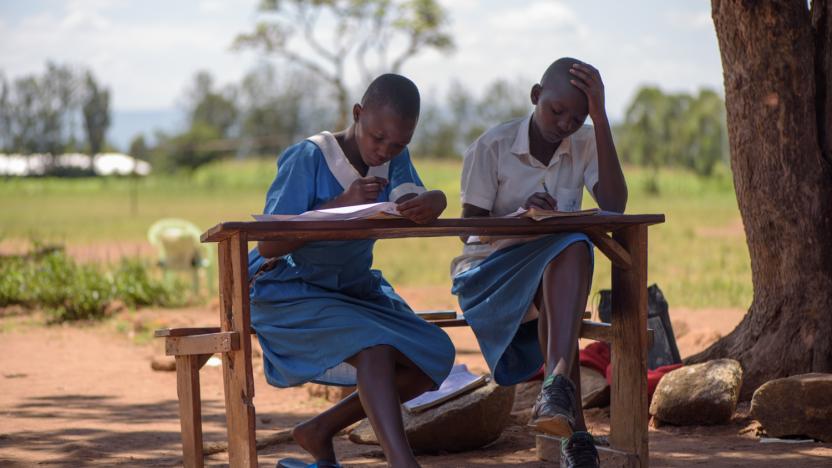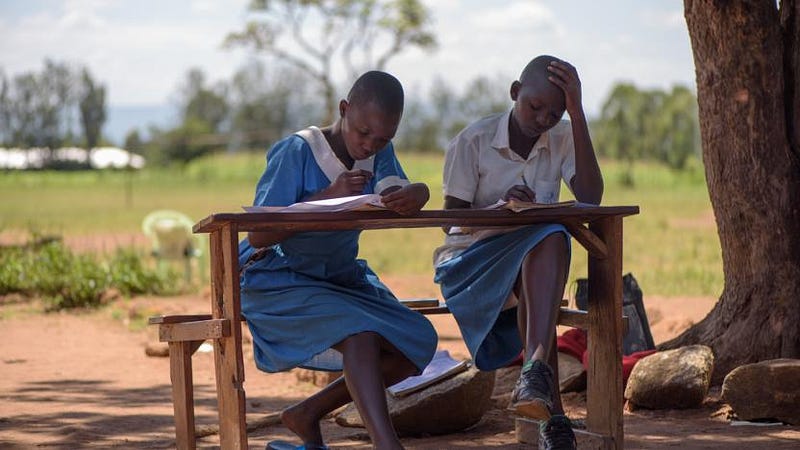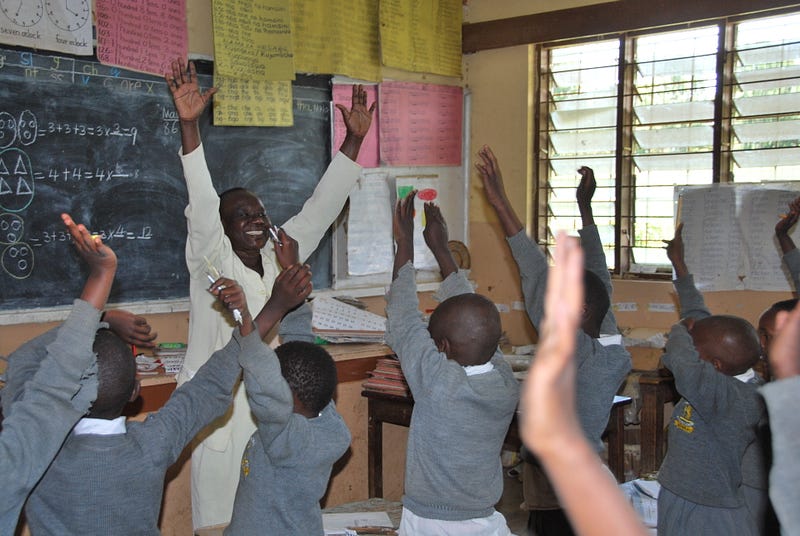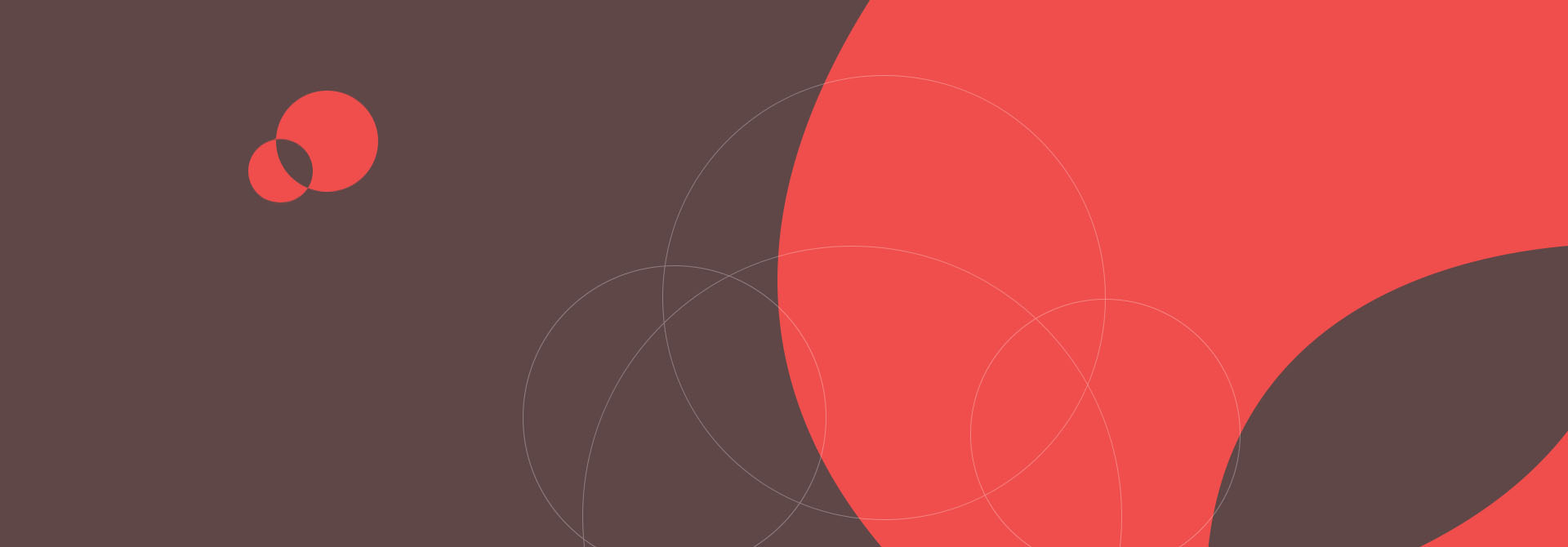
Peer education is the place to start for students attending school in Tanzania
This article represents my personal take on what can be done as a solution for public schools in Tanzania to perform better and increase students involvement in the learning process

It is normal to see public schools with over 100 students in one class attended by a single teacher. It is also normal to hear that when it comes to school performances, schools with fewer students congested in a class perform best and schools with many students performing poorly which is most of the public schools in Tanzania. So my take here is, times are changing and they have been changing for a loong…….loooong time, we need a change strategy if we want to help assist students in public school have a shot at life.
Really the idea I am sharing can both fit the public and private classes and can be used to class with over 100 students, even fewer students, the strategy works in both settings. I am suggesting that in our schools’ mostly public schools with many students we start to use peer education as an embedded way of teaching for better performance.
Peer education/Peer teaching can be described as learning from one’s peers. Which translates to putting learning in the custodians of fellow learners. I remember when I was taking my education it was part of the individual time table to meet and discuss subjects after classes and go through some important learning’s so all of us in the group could understand some difficult concept from the class.

“Peer teaching can enhance learning by enabling learners to take responsibility for reviewing, organizing, and consolidating existing knowledge and material; understanding its basic structure; filling in the gaps; finding additional meanings; and reformulating knowledge into new conceptual frameworks’ (Dueck, 1993).”
I believe with the rapid growth of population not just in Tanzania but the whole of Sub Saharan countries in the next 10 years or so, adopting peer education will be beneficial for the schools as other ways of combating teacher-student ratio which is the highest in Sub Saharan at 1:43. I believe embracing peer education is going to be profitable and will increase the engagement of students in learning activities while at school and here is why
Change the role of teacher to a coach and a trainer
Embracing peer education will highly benefit the teacher themselves as now teachers are in charge of single-handed teaching all students in his/her class, something which is very difficult because of how different students are by nature. Also supervising all students will be difficult as you may well be able to cover an area in the class to listen to you but it tends to become challenging when you are trying to control everybody all the time. So a peer education teacher can form allies with the students who will be assisting other students and use them to assist the learning process in the classroom and after classroom. This means the teacher can meet with the small team to discuss areas of challenge for the students and rectify them with the small groups and let them share learning in their group. This makes the teacher a winner and eases the process of knowledge flow…
Giving students leadership and management role at an early stage
I believe with peer education being part of the learning, it will grant students more opportunities for them to lead and be responsible for others. This is crucial because when one misses a formal school leadership position like being a class representative or being prefect it is difficult for students who want to be leaders. Through peer education, it will be possible to expose more students to leadership roles. And this kind of leadership is a great one as they will be participating in the growth of other members of the group, growing themselves in the process as well. The leadership role will be very key to them as they grow to be leaders of different companies and offices.
Spaces for students to own the lessons
In many cases when the lesson is taught in a class it is difficult for students to analyze the content and internalize the meaning behind what they are being taught. Peer spaces could in so many ways enable students to make the learning person joke about, ask friends for their own perspective and come to a much more deeper understanding. An understanding that could relate to them about that particular topic, and through that help in moving away from cramming mentality with the students and get on with students actually understanding what they are being taught.
Safe spaces to deal with personal growth challenges
I recently met a young person who had a challenge of stuttering and because he did not know how to deal with the challenge he could not do anything about it, in return he ended up being quite most times. After the meeting we had out of class during free time and the technique I provided him, a few months later he has been able to reduce stuttering and even increased in the rate of participating in class and he even registered himself to participate in a debate. Imagine how many young people with different challenges are going through at this moment and how many dreams are we shutting as a result of the challenges faced. I think peer education will play a central role in breaking fear and allow more conversation to occur. We could heal so much and allow for so many transformations to occur the kind of transformation that can never happen in a class setting.
Combating the lack of materials in most schools
I understand that in some ways since my era in public schools there were always means to which we the students were divided in sort of groups for different purposes. I don’t speak here as someone who is vain and doesn’t understand what happens in schools, rather I am speaking as a person who also went to the same schools and I was lucky enough to pass and continue. I am sharing techniques I wish I used back in those days so I could have benefited more. Within these peer learning, students could learn to study together different materials including books, teachers’ notes, watch videos to intensify their learning and more. These groups could be influential in helping students adapt better behaviors including interest in reading, drawing, taking note and presentation.

We have been limiting education into a class activity mainly, I think with the increase on the number of students failing in class we should look for different ways to solve this challenge. We need to open up the learning and allow it to continue happening during all school time. We need to invite students to be key in making sure that the lessons they are being taught are actually being understood by them not only crammed.
It is high time teachers should get back to the 1:40 Sub Sahara teacher to student standard and not 1:43 that we have now. We can get to this number by letting the teacher apart from training a class of 100 students get assistance from students within classes who have been able to understand or just students who are willing to lead others in the process of deepening their understanding in that particular subject.
By, Adrian Nzamba



No Comments